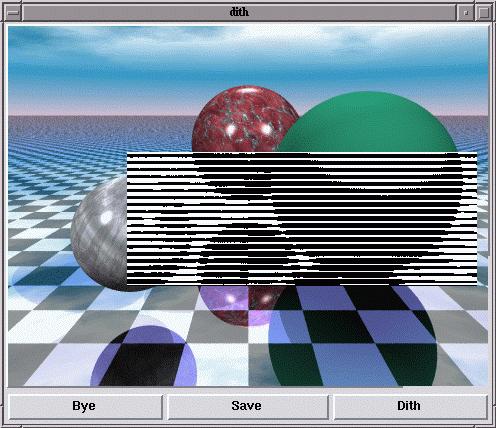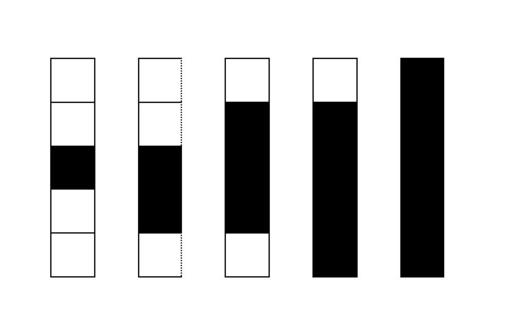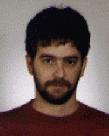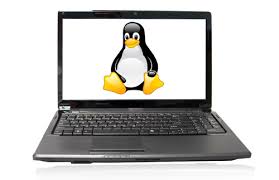See how to use a mix of Tcl, Tk, and C to make image manipulation both easy and efficient.
To start an implementation in C from scratch for an image processing (or manipulation) program is a difficult task. It is necessary not only to develop an internal data structure, but also to write the filters for reading and writing the available graphic formats. The interface design and implementation is also difficult, due to the need for dealing with issues such as color allocation, quantization and so on. In this article, we’ll show you how Tcl and Tk can help you in dealing with these problems easily. However, it should be noted that some operations on images are computationally intensive, making the use of Tcl prohibitively expensive. So we’ll use a mixture of Tcl and Tk with C, and get the best of both worlds.
In Linux Journal #10 (February, 1995) Matt Welsh wrote a nice article describing a way to use Tcl/Tk as a front end for C programs using pipes to and from a wish process. While this method has many advantages, e.g., straightforward implementation and memory saving when using static libraries, it does present some limitations:
- First, since your program is “split” into two different processes, the sharing of resources is not an easy task.
- Second, all communication is done through the pipes, imposing an extra burden on the system.
In this article, we approach this problem using Tcl/Tk as an extension to the core program, and show some of the advantages of solving it in this manner.
A Practical Example: Let’s Dither
We’ll start by writing a small program to do a special dither (half-toning) for creating a special effect that applies only to a selected sub-rectangle of an image.
The described technique transforms vertical strips of colored pixels into a vertical strip of black and white pixels, where the average intensity best approximates the original average. Also, all black pixels are grouped in the center. (This effect has been used in the entertainment industry for some time now.) See Figure 1. The following sections describe the necessary steps for accomplishing this effect.

Figure 1. The typical appearance of the program after the dithering of one rectangular region.
Image in Tk
The very fabric of our program is based on the image primitive, which first appeared in Tk version 4.0. The idea is to create an “image object” with an associated command, just like any normal widget.
Images can be of two different types: bitmaps and photos. While bitmaps deal only with foreground and background colors, photos treat true-color objects, automatically quantizing for the available number of colors in the display. Let’s focus on the “photo” type, which was implemented by Paul Mackerras based on his earlier “photo widget”.
A command for creating an image object named “picture” with the image in the file “mickey.gif” would be:
image create photo picture -file mickey.gif
After its creation we can easily do some operations. For example, to get its dimensions:
set pic_wid [image width picture] set pic_hei [image height picture]
You can also create a second image, and copy a section of the first one into the second:
image create photo pic_piece
pic_piece copy picture -from 0 0
[expr $pic_wid/2] [expr $pic_hei/2]
During the copy you can use the Tk options subsample or zoom to reduce the image or enlarge a portion of it. The copied portion can be placed anywhere inside the destination image.
It is possible to specify the size of the color cube of a given image (you can even explicitly impose it to be gray-scale), its gamma correction and some other nifty things. Check out the photo man page for details.
A good way to both see the image and allow some manipulation is to treat it as a “canvas object”:
canvas .c
pack .c
.c create image 1 1 -anchor nw -image picture
-tags "myimage"
After creation, you can draw and manipulate any canvas object you wish just as if it were floating upon myimage. Just remember to keep the image as the “lower” object, so that you’ll always be able to see everything else. This positioning can be accomplished by giving:
.canvas lower myimage
Tcl/Tk as an Interface for Your C Programs
Let’s make a small distinction between two kinds of C-Tcl/Tk applications: those which act like a shell (wish, for example) and those which use the Tcl/Tk extension in a predetermined way.
If you want to create another “instance” of wish with some extra commands you have created, you should read the man pages concerning Tcl_Main and Tcl_AppInit.
If your program uses Tcl/Tk only for the interface, and it is not intended to be used in a “shell-like” fashion, the approach is slightly different. I recommend you grab the nice demo program tkHelloWorld.tar.gz (see Sidebar) to use as an example.
Basically, your program has to implement the following four steps:
- Initialize Tcl and Tk.
- Create the Tcl commands responsible for calling your C routines.
- Ask Tcl to evaluate an “interface description” file.
- Let Tk control the main flow of the program.
In the C code shown in Listing 1, the comments identify exactly which of the four steps is being done.
Listing 1
/*
---------------
main.c
Time-stamp: <06 Dec 96 -- 14:20:16 siome>
Dith - Special Dither of image pieces
Siome Klein Goldenstein
---------------- */
/* the following declare allows the program to
compile and work with different version of TK
(4.0 for Red Hat 3.0.3 and 4.1 for Red Hat 4.0
for example) */
#define TK_IS_40 0
#include <stdio.h>
#include <stdlib.h>
#include <math.h>
#include <string.h>
#if TK_IS_40
#include <tcl/tcl.h>
#include <tcl/tk.h>
#else
#include <tcl.h>
#include <tk.h>
#endif
#include "dither.h"
int flx, frx, fuy, fdy;
int ftx, fty;
double *filter;
#if TK_IS_40
static Tk_Window mainWindow;a
#endif
int
main (int argc, char **argv)
{
Tcl_Interp *interp;
char s[100];
#if TK_IS_40
static char *display = NULL;
#endif
if (argc != 2)
{
fprintf(stderr,
"%s: wrong number of arguments\n",
argv[0]);
exit (1);
}
/* Here begins the first step on C and TCL
integration: The Tcl/Tk initialization.
Notice that mainWindow is global variable */
interp = Tcl_CreateInterp();
#if TK_IS_40
mainWindow = Tk_CreateMainWindow(interp,
display, argv[0], "Tk");
if (mainWindow == NULL)
{
fprintf(stderr, "%s\n", interp->result);
exit(1);
}
#endif
if (Tcl_Init(interp) == TCL_ERROR)
{
fprintf(stderr, "Tcl_Init failed: %s\n",
interp->result);
exit (1);
}
if (Tk_Init(interp) == TCL_ERROR)
{
fprintf(stderr, "Tk_Init failed: %s\n",
interp->result);
exit (1);
}
/* The second step, creation of your Tcl
commands. The creation of a similar
initialization routine is just to keep
the same style. */
if (Dith_Init(interp) == TCL_ERROR)
{
fprintf(stderr,"Recon_Init failed: %s\n",
interp->result);
exit(1);
}
/* Now we create the original image and ask TCL
to evaluate our "interface description"
file. */
sprintf(s,
"image create photo original -file %s\n",
argv[1]);
Tcl_GlobalEval (interp,s);
Tcl_EvalFile (interp,"./int-dither.tcl";<\n>)
/* Finally, we let Tk take care of main loop */
Tk_MainLoop();
return (0);
}
/* The initalization Routine */
int
Dith_Init (Tcl_Interp *interp)
{
Tcl_CreateCommand (interp, "CDith",
Dith_cdither, (ClientData *) NULL,
(Tcl_CmdDeleteProc *) NULL);
return TCL_OK;
}
int
Dith_cdither (ClientData cd, Tcl_Interp *interp,
int argc, char **argv)
Tk_PhotoHandle todith;
Tk_PhotoImageBlock blorig, blnew;
int tx, ty;
int step;
int x, y, i;
int ct;
double intens;
/* get the image handle */
todith = Tk_FindPhoto (argv[1]);
/* get the vertical size of dithering cluster */
step = atoi (argv[2]);
/* Obtain the image itself from the handle */
Tk_PhotoGetSize (todith, &tx, &ty);
Tk_PhotoGetImage (todith, &blorig);
/* Create new "image" for placing the dither */
blnew.width = tx;
blnew.height = ty;
blnew.pitch = tx;
blnew.pixelSize = 1;
blnew.offset[0] = 0;
blnew.offset[1] = 0;
blnew.offset[2] = 0;
if ( (blnew.pixelPtr = (unsigned char*)
calloc (tx * ty, sizeof (unsigned char)))==
NULL)
{
fprintf (stderr,
"Error in memory allocation\n");
exit (1);
}
for (y=step-1; y<ty; y+=step)
{
for (x=0; x<tx; x++)
{
for (intens=0.0, ct = 0; ct< step; ct++)
intens += ( RED(&blorig,x,y-ct) +
GREEN(&blorig,x,y-ct) +
BLUE(&blorig,x,y-ct) ) / 3.0;
intens /= (255.0 * step);
i = rint(intens * (step-2)) + 1;
for (ct=0; ct < (i/2); ct++)
{
/* for the sake of clarity, no optimization
is done */
RED(&blnew, x, y-step+1+ct) = 255;
RED(&blnew, x, y-ct) = 255;
}
if (i%2)
RED(&blnew, x, y-step+1+(i/2)) = 255;
}
}
Tk_PhotoPutBlock (todith,&blnew,0,0,tx,ty);
free (blnew.pixelPtr);
return TCL_OK;
}
From this point on, we wish to use C programming only for some critical functions, since the main flow and control of our application is handled by Tk.
Calling C Functions from Tcl
If you are interested in the myriad ways you can call a C routine, read TCL and the TK Toolkit by John K. Ousterhout, Addison-Wesley, 1994.
Essentially your C function must have a prototype like the following:
int
C_func_name (ClientData cd, Tcl_Interp *interp,
int argc, char **argv);
and you must register it by:
Tcl_CreateCommand (interp, "Tcl_func_name",
C_func_name, (ClientData *) NULL,
(Tcl_CmdDeleteProc *) NULL);
Then, whenever Tcl encounters the command Tcl_func_name, it will call your routine, which will receive the Tcl parameters just as main receives the argc and argv arguments from the shell, i.e., argc will be the number of words and argv will be the “vector of strings”.
Passing Images Back and Forth
We want our C routine to process an image called image_name under Tk. The immediate solution would be to pass the color of each pixel (the photo widget has this option) again and again until the image is complete. While this program was running, we could go out for lunch, visit a few friends, have dinner and see a movie. However, there is a better way to accomplish the goal. From C, we ask Tk to take care of it. First, we have to define:
Tk_PhotoHandle image; Tk_PhotoImageBlock blimage;
Then call the following functions in sequence:
image = Tk_FindPhoto ("image_name");
Tk_PhotoGetImage (image, &blimage);
The image is in blimage, which is a structure defined in tk.h as:
typedef struct {
unsigned char *pixelPtr;
int width;
int height;
int pitch;
int pixelSize;
int offset[3];
} Tk_PhotoImageBlock;
All color information comes in unsigned characters (values between 0 and 255). The pixelPtr is the address of the first pixel (top-left corner). The width and height define the image dimensions, while pixelSize is the address difference between two horizontally adjacent pixels, and pitch is the address difference between two vertically adjacent ones. Finally, the offset array contains the offsets from the address of a pixel to the addresses of the bytes containing the red, green and blue components.
Using the above definitions allows different representations of the image; for example:
- Define a point with a dimension of three bytes, one for each color component. Then the pixelSize is 3, the offset 0, 1 and 2 and the pitch three times the width.
- Think of the color image as three planes (images), one for each color. Then the pixelSize is 1, the offset is 0, width*height and 2*width*height. Finally, the pitch is equal to the width.
The colors of a given pixel can be obtained with three simple C macros:
#define RED(p,x,y) ((p)->pixelPtr[(y)*(p)-> pitch + (x)*(p)->pixelSize + (p)->offset[0]] ) #define GREEN(p,x,y) ((p)->pixelPtr[(y)*(p)-> pitch + (x)*(p)->pixelSize + (p)->offset[1]]) #define BLUE(p,x,y) ((p)->pixelPtr[(y)*(p)-> pitch + (x)*(p)->pixelSize + (p)->offset[2]])
You call the macros giving the address of the block structure explained above as the first parameter, and the x and y coordinates (where 0,0 is the upper-left corner) of the pixel as the second and third. For an optimized program, it would be much faster to use address differences to determine the position of the next pixel from the current pixel, i.e., its neighbor.
About the Program
The complete C code for this program is in Listing 1, and the Tcl code is in Listing 2.
Figure 2 is a snapshot of the program in action.

Figure 2. An Example of all possible output clusters, when the vertical size is five. The criterion of choice is the nearest average.
Listing 2
#
# Interface for dith
# Siome Klein Goldenstein
# Time-stamp: <30 Jul 96 --- 11:53:35 siome>
#
# global variables
# image size
set glb_tx [image width original]
set glb_ty [image height original]
# bottom-left coordinates of image
set glb_tx_1 [expr $glb_tx -1]
set glb_ty_1 [expr $glb_ty -1]
# corners of rectangle
set glb_cor1 {0 0}
set glb_cor2 [list [expr $glb_tx_1] [expr $glb_ty_1]]
# size of "dith strip"
set glb_dithsize 7
# widgets
canvas .c -bd 2 -relief raised -width $glb_tx\
-height $glb_ty \
-scrollregion "0 0 $glb_tx_1 $glb_ty_1"
frame .but -bd 2 -relief flat
button .but.bye -text "Bye" -command "exit"
button .but.sav -text "Save" -command "original write result.ppm -format PPM"
button .but.dit -text "Dith" -command "dither"
pack .c .but -side top -expand yes -fill x
pack .but.bye .but.sav .but.dit -side left -expand yes -fill x
# some initialization and event bindings
.c create image 0 0 -anchor nw -image original -tags "image"
bind .c <Button-1> "firstcorner %x %y"
bind .c <B1-Motion> "moving %x %y"
bind .c <ButtonRelease-1> "secondcorner %x %y"
bind .c <Button-2> "clearrec"
# the procedures
proc firstcorner {xi yi} {
global glb_cor1
global glb_message
global glb_dithsize
set glb_cor1 [list [expr round([.c canvasx $xi])] \
[expr round([.c canvasy $yi $glb_dithsize])]]
.c delete selrec
}
proc moving {xm ym} {
global glb_cor1
global glb_cor2
global glb_tx
global glb_ty
global glb_dithsize
set x [expr round([.c canvasx $xm])]
set y [expr round([.c canvasy $ym $glb_dithsize])]
if { $x >= 0 && $x < $glb_tx && $y >= 0 && $y < $glb_ty } {
.c delete selrec
.c create rectangle [lindex $glb_cor1 0] [lindex $glb_cor1 1] \
$x $y -outline red -tags selrec
set glb_cor2 [list $x $y]
}
}
proc secondcorner {xf yf} {
global glb_cor1
global glb_cor2
global glb_tx
global glb_ty
global glb_dithsize
set x [expr round([.c canvasx $xf])]
set y [expr round([.c canvasy $yf $glb_dithsize])]
if { $x >= 0 && $x < $glb_tx && $y >= 0 && $y < $glb_ty } {
.c delete selrec
set glb_cor2 [list $x $y]
.c create rectangle [lindex $glb_cor1 0] [lindex $glb_cor1 1] \
$x $y -outline red -tags selrec
}
}
proc clearrec {} {
global glb_cor1
global glb_cor2
global glb_tx_1
global glb_ty_1
.c delete selrec
set glb_cor1 [list 0 0]
set glb_cor2 [list $glb_tx_1 $glb_ty_1]
}
proc dither {} {
global glb_cor1
global glb_cor2
global glb_dithsize
set p1x [lindex $glb_cor1 0]
set p1y [lindex $glb_cor1 1]
set p2x [lindex $glb_cor2 0]
set p2y [lindex $glb_cor2 1]
# make sure corner 1 is upper left one
if {$p1x > $p2x} { set tmp $p2x; set p2x $p1x; set p1x $tmp }
if {$p1y > $p2y} { set tmp $p2y; set p2y $p1y; set p1y $tmp }
# so that image copy include last row and column
incr p2x; incr p2y
# create an temportary image, so that the C routine will always
# work on all the image
image create photo todither
todither copy original -from $p1x $p1y $p2x $p2y
CDith todither $glb_dithsize
# The C routine could write directly to the original image, but
# I found this way more robust.
original copy todither -to $p1x $p1y
# erase tmp image, otherwise if the next rectangle is smaller its
# size wouldn't shrink
image delete todither
.c delete selrec
}
The program can be downloaded from: ftp://ftp.impa.br/pub/visgraf/people/siome/lj/ljdither.tgz.
An Important Remark about C and Tcl/Tk Interaction
When Tcl/Tk calls a function in C, it can still receive interface events, such as button presses or slider movements; however, it cannot run the associated scripts (or C functions) bound to these events, since for the moment the C function controls the flow.
A good example is a mass-spring simulator, where the C function has a loop doing the simulation and canvas drawing. It would be wonderful to be able to change the constants during the simulation, or even abort it before the pre-determined time. This option is also needed in long Tcl scripts. The solution in both cases is to use the update command from time to time in order to process user input.
From the update man page:
The update command with no options is useful in scripts where you are performing a long-running computation but you still want the application to respond to user interactions; if you occasionally call update, user input will be processed during the next call to update.
Conclusions
A powerful combination is achieved by letting Tcl/Tk deal with the interface and C with the critical tasks of a program.
A lot of useful extra widgets can be found on the Internet for using sound (see tkSound), moving objects and so on. The principle for integration of these widgets is the same—you can create a new wish-like shell, or use the new available functions together with come extra C code of your own.
Another good package is Tix, which is included with many Linux distributions. It adds many wonderful widgets to Tk, and has an object-oriented approach to building new “mega-widgets”.
I hope you find this article useful, and have a nice hack.
Resources
 Linux, Linux OS, Free Linux Operating System, Linux India Linux, Linux OS,Free Linux Operating System,Linux India supports Linux users in India, Free Software on Linux OS, Linux India helps to growth Linux OS in India
Linux, Linux OS, Free Linux Operating System, Linux India Linux, Linux OS,Free Linux Operating System,Linux India supports Linux users in India, Free Software on Linux OS, Linux India helps to growth Linux OS in India





